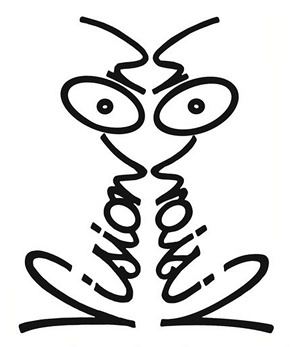8.4 /10 1 Votes
Number of episodes 168 | 8.3/10 IMDb Number of seasons 15 | |||||||||||||||||||||||||||||||||
 | ||||||||||||||||||||||||||||||||||
Directed by Patrick Dowling, Gerald Wiltshire, Diana Potter, Michael Grafton-Robinson, Peter Wiltshire, Clive Doig Cast Similar | ||||||||||||||||||||||||||||||||||
Vision on uk bbc 1 1974
Vision On was a British children's television programme, shown on BBC1 from 1964 to 1976 and designed specifically for children with hearing impairment.
Contents
- Vision on uk bbc 1 1974
- Concept and production
- Presenters
- Segments
- Music
- Co productions
- Distribution
- End of production
- Series Guide
- Tie in publication
- References
Concept and production
Vision On was conceived and developed by BBC producers Ursula Eason and Patrick Dowling to replace a monthly series For Deaf Children (1952–64), a programme paced slowly enough for children to read captions and subtitles. It was noted in surveys that a favourite for deaf children was Top of the Pops, due to its lively and fast-moving format and the fact that even the profoundly deaf could still enjoy the music's lower frequency notes.
There was initial disagreement as to whether lip-reading or British sign language would be more appropriate. Eventually it was decided that, since the new programme was intended as entertainment rather than education, communication would be entirely visual, the amount of text would be severely limited and, except for a few repeated statements, speech would be abandoned altogether. The title Vision On referred to the illuminated sign in studios indicating that cameras were live. Normally another sign "Sound On" would follow, but the titles for Vision On deliberately omitted this. The programme's logo is made up from the words of the title and its reflection.
The aim of the programme was to entertain but also to encourage imagination, with a fast-paced flow of contrasting ideas, both sane and silly. This mixture was an apparent success as the series ran for twelve years and, while retaining a commitment to the deaf, attracted a wider following and gained several awards including the international Prix Jeunesse and the BAFTA Award for Specialised Programmes.
Presenters
A full list of contributors can be found, but the main presenters were:
Segments
Besides the scenes with Hart, Keysell and the others doing artwork (which in later years appeared on the screen as the artwork being made without any hands), Vision On had many memorable segments:
Music
Despite its intended hearing-impaired audience, the show made extensive use of music for the benefit of hearing viewers watching the show. Notable themes included:
Co-productions
Vision On was co-produced in France with ORTF, in Canada with Radio-Canada under the title Déclic and in Sweden as Ögon Blik.
Distribution
The programme was shown in many other countries, including France, Australia, Canada, and New Zealand.
In the United States, many PBS stations, and a few commercial stations, aired Vision On during the 1970s and 1980s. Some of these stations, such as KOMO-TV in Seattle, taped their own episodes, which were seen along with the BBC-produced shows.
End of production
Series' producer Dowling eventually found that the flow of new ideas became more and more difficult to sustain, and after twelve years decided to close the programme while it was still at its height.
Dowling and Hart continued to make arts programmes, starting with Take Hart (which kept "The Gallery" segment), continuing with Hartbeat during the 1980s and 1990s, and then the BBC's current children's art programme, SMart.
